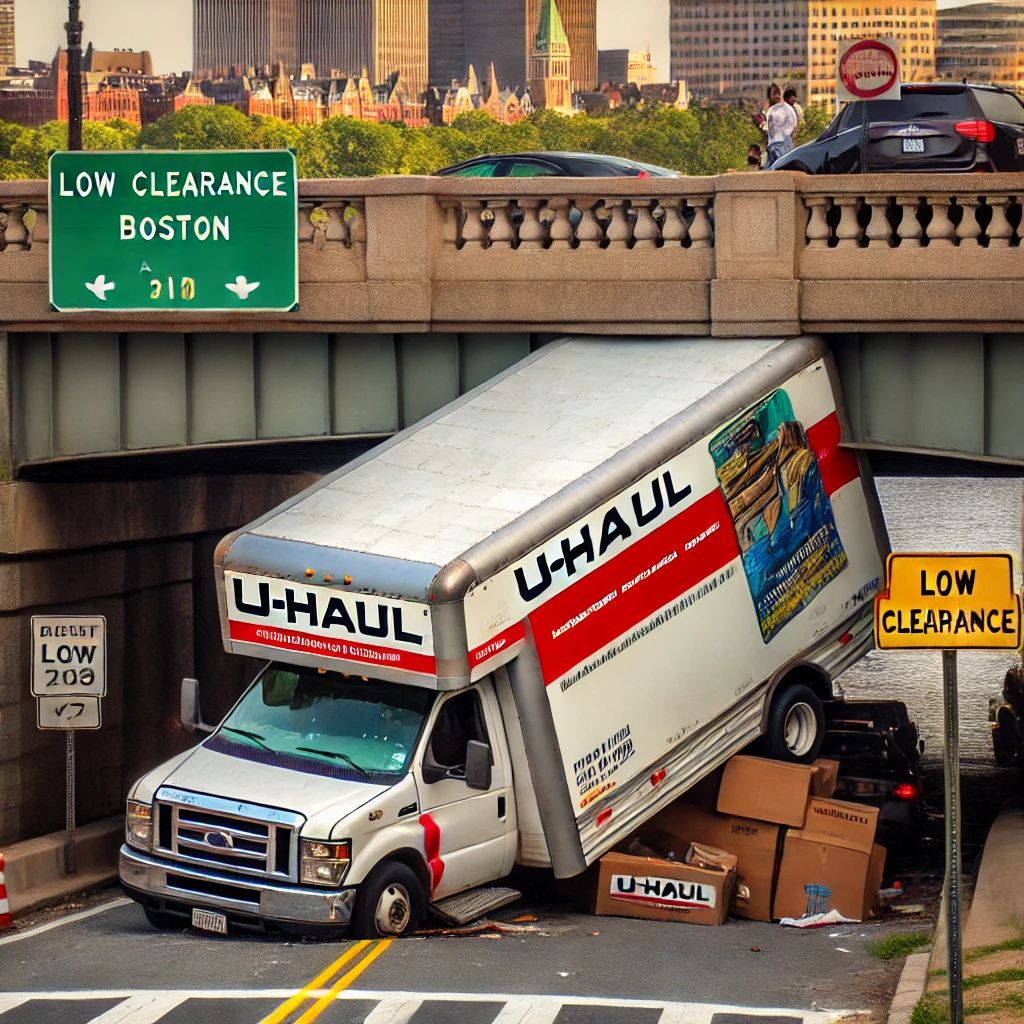Moving to Boston? Don't get "Storrowed"!
If you've spent any time in Boston or followed local news, you've likely come across the term "Storrowed." For those unfamiliar with the city's quirks, getting "Storrowed" is a uniquely Bostonian experience that involves trucks and Storrow Drive, a major road running along the Charles River.
Storrow Drive: A Low Clearance Hazard
Storrow Drive is a popular roadway for Bostonians and visitors alike, offering scenic views of the Charles River and convenient access to many parts of the city. However, it comes with a significant caveat: extremely low overpasses. The road was designed for cars, not large trucks, and the clearance of these overpasses is infamously low—around 10 feet in some areas.
The Origins of Getting "Storrowed"
The term "Storrowed" refers to the unfortunate event when a truck, typically a moving truck, such as a UHaul, driven by someone unfamiliar with Boston's roadways, tries to drive on Storrow Drive and ends up colliding with one of these low overpasses. The results are often disastrous: the truck's roof gets peeled back like a sardine can, causing traffic delays and damage to the vehicle.
This occurrence is so common that it has become a part of the local lexicon, with the term "Storrowed" encapsulating both the act and the aftermath.

Why Does It Keep Happening?
Despite numerous signs, flashing lights, and warnings, trucks continue to get Storrowed year after year. Several factors contribute to this recurring problem:
- GPS Misguidance: Many drivers rely on GPS systems that don't always account for height restrictions. This can lead unsuspecting drivers to Storrow Drive, unaware of the impending danger.
- Out-of-Town Drivers: A significant number of those who get Storrowed are new to the city, often students moving to one of Boston's many universities. Unfamiliar with the area, they don't realize the peril until it's too late.
- Lack of Awareness: Even with signs, the low clearance can still catch drivers off guard, especially if they're preoccupied with navigating a new city.
The Consequences of Getting Storrowed
Getting Storrowed is no minor mishap. The consequences can be severe, including:
- Significant Traffic Disruptions: Storrow Drive is a busy roadway, and an accident involving a truck can cause major delays and backups.
- Vehicle Damage: The damage to the truck is often substantial, with the roof or cargo area getting completely torn off.
- Legal and Financial Repercussions: The driver can face fines, and their insurance may not cover the full cost of the damage. Moreover, the city may seek compensation for any damage to infrastructure.
Preventing Future Storrowings
The city has made efforts to prevent trucks from venturing onto Storrow Drive, but the problem persists. Some suggestions to further mitigate the issue include:
- Enhanced GPS Alerts: Making sure GPS systems more consistently warn drivers about height restrictions could help.
- Better Signage: While there are already plenty of warnings, more could be done to ensure they are visible and impossible to miss.
- Education for New Residents: With so many students and new residents moving to Boston each year, a targeted campaign to educate them about the dangers of Storrow Drive could be beneficial.
A Boston Rite of Passage?
For better or worse, getting Storrowed has become something of a rite of passage in Boston. While it's certainly not an experience anyone would want to have, it's one that's firmly entrenched in the city's cultural fabric. So, if you're new to Boston or just passing through, remember: Storrow Drive is not a place for tall trucks. Or you might just end up as the latest victim of this notorious roadway.